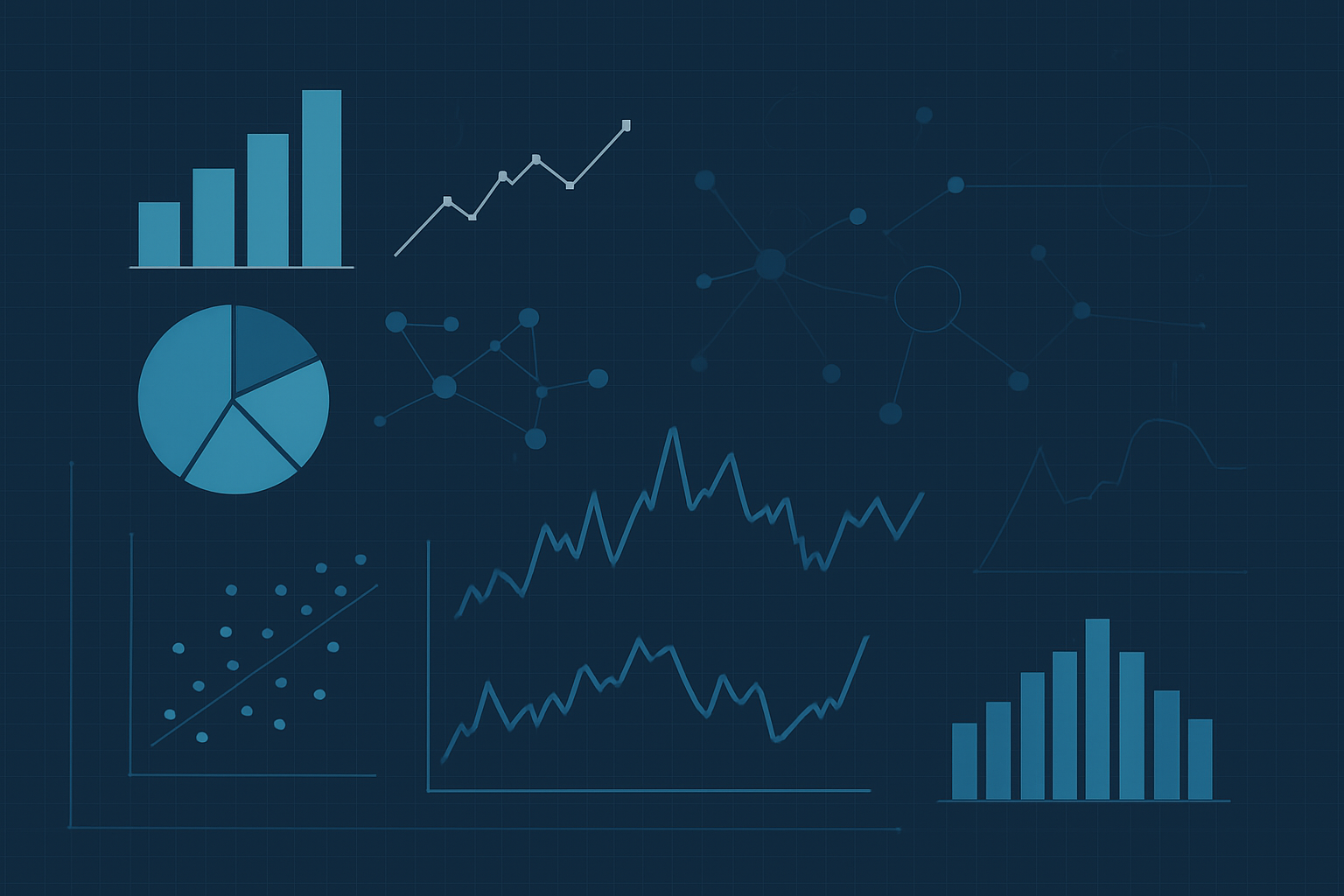The Power of Data Analysis in Financial Market
In today’s rapidly evolving financial landscape, the ability to effectively utilize data analysis in financial market is no longer a luxury but a necessity for investors seeking a competitive edge. The sheer volume and velocity of financial data generated daily present both challenges and unparalleled opportunities. This article delves into the critical role of data analysis in financial market, exploring its fundamental concepts, essential tools, and practical applications that empower investors to make more informed decisions and navigate market complexities with greater confidence. Understanding data analysis in financial market is key to unlocking deeper insights and optimizing investment strategies.
Why Data Analysis in Financial Market is Crucial for Modern Investors
Effective data analysis in financial market provides a robust framework for understanding past performance, identifying emerging trends, and forecasting future movements. It moves beyond mere intuition, offering a systematic approach to investment decisions. By leveraging data analysis in financial market, investors can:
• Identify Trends and Patterns: Discover recurring behaviors and relationships within financial data that might indicate future market direction.
• Assess Risks and Opportunities: Quantify potential risks associated with investments and uncover undervalued assets or growth opportunities.
• Support Informed Decision-Making: Base investment choices on empirical evidence rather than speculation, leading to more rational and potentially profitable outcomes.
• Optimize Portfolio Performance: Continuously monitor and adjust portfolios based on analytical insights, aiming for better risk-adjusted returns.
The growing complexity of global markets and the proliferation of diverse financial instruments underscore the indispensable nature of data analysis in financial market for sustained success.
Types of Financial Data Used in Data Analysis in Financial Market
To perform comprehensive data analysis in financial market, a variety of data types are utilized. Each type offers unique insights and contributes to a holistic understanding of the market:
• Market Data: This includes real-time and historical prices (open, high, low, close), trading volumes, bid-ask spreads, and various technical indicators (e.g., moving averages, RSI, MACD). This data is fundamental for technical analysis and short-term trading strategies.
• Fundamental Data: Comprises company-specific financial statements such as balance sheets, income statements, and cash flow statements. It also includes economic indicators like GDP, inflation rates, interest rates, and employment figures. Fundamental data analysis in financial market helps assess the intrinsic value of assets and the overall economic health.
• Alternative Data: A newer category encompassing non-traditional data sources like satellite imagery, social media sentiment, news articles, credit card transactions, and web traffic. This data can provide unique, often early, insights not captured by traditional sources, enhancing data analysis in financial market.
Integrating these diverse data sets is crucial for a comprehensive data analysis in financial market approach.
Essential Tools for Data Analysis in Financial Market
The landscape of tools for data analysis in financial market ranges from simple spreadsheets to sophisticated programming environments. The choice of tool often depends on the complexity of the analysis and the user’s technical proficiency:
• Spreadsheets (Excel/Google Sheets): Excellent for basic data organization, calculations, and visualization. They are accessible and widely used for initial exploration and simple modeling in data analysis in financial market.
• Programming Languages (Python/R): These are powerful tools for advanced data analysis in financial market. Python, with libraries like Pandas for data manipulation, NumPy for numerical operations, Matplotlib and Seaborn for visualization, and Scikit-learn for basic machine learning, is particularly popular. R is also widely used, especially in statistical analysis.
• Financial Data Platforms: Services like Bloomberg Terminal, Refinitiv Eikon, and TradingView offer comprehensive data, analytical tools, and charting capabilities. While often expensive, they are industry standards for professional data analysis in financial market.
• Business Intelligence (BI) Tools: Platforms such as Tableau and Power BI allow for interactive dashboards and advanced visualizations, making complex data analysis in financial market more digestible.
Mastering a combination of these tools significantly enhances one’s capabilities in data analysis in financial market.
Basic Techniques of Data Analysis in Financial Market

Several core techniques form the foundation of data analysis in financial market:
• Descriptive Statistics: Calculating measures like mean, median, mode, standard deviation, and variance to summarize and understand the main characteristics of a dataset. This is often the first step in any data analysis in financial market.
• Time Series Analysis: Examining data points collected over a period to identify trends, seasonality, and cyclical patterns. Financial data is inherently time-series based, making this a critical technique for data analysis in financial market.
• Regression Analysis: Modeling the relationship between a dependent variable (e.g., stock price) and one or more independent variables (e.g., economic indicators). This helps in forecasting and understanding drivers of change in data analysis in financial market.
• Correlation Analysis: Measuring the strength and direction of a linear relationship between two variables. Understanding correlations between assets is vital for portfolio diversification in data analysis in financial market.
• Visualization: Creating charts and graphs (line charts for trends, candlestick charts for price action, scatter plots for relationships) to visually represent data, making complex information more understandable and revealing insights quickly. Effective visualization is a cornerstone of data analysis in financial market.
These techniques, when applied judiciously, can transform raw data into actionable intelligence for data analysis in financial market.
A Simplified Case Study: Applying Data Analysis in Financial Market
Consider an investor wanting to analyze the historical performance of a specific stock, say,
Apple (AAPL). Using data analysis in financial market, they would:
1. Collect Data: Download historical stock prices (open, high, low, close, volume) for AAPL from a reliable financial data provider.
2. Clean and Organize: Ensure data consistency, handle missing values, and format it for analysis.
3. Calculate Key Metrics: Compute daily returns, moving averages (e.g., 50-day and 200-day), and volatility.
4. Visualize Data: Plot the stock price over time, overlaying moving averages to identify trends and potential buy/sell signals. Create a histogram of daily returns to understand their distribution.
5. Interpret Results: Observe if the stock is in an uptrend or downtrend, identify periods of high or low volatility, and note any significant price movements. This practical application of data analysis in financial market helps in forming an investment thesis.
This simple example illustrates how data analysis in financial market can provide a structured approach to evaluating investment opportunities.
Challenges and Best Practices in Data Analysis in Financial Market
While powerful, data analysis in financial market comes with its own set of challenges:
• Data Quality and Availability: Financial data can be noisy, incomplete, or difficult to access. Ensuring data accuracy and reliability is paramount for effective data analysis in financial market.
• Information Overload: The sheer volume of data can be overwhelming. The ability to filter relevant information and focus on key metrics is crucial.
• Market Volatility and Unpredictability: Financial markets are influenced by countless factors, making precise predictions challenging. Data analysis in financial market should be used to understand probabilities and manage risk, not to guarantee outcomes.
• Bias in Analysis: Analysts can inadvertently introduce biases. Adhering to objective methodologies and continuously validating models are essential best practices in data analysis in financial market.
Best practices include continuous learning, cross-referencing data from multiple sources, and understanding the limitations of any analytical model. A critical mindset is vital for successful data analysis in financial market.
The Future of Investment is Data-Driven with Data Analysis in Financial Market
The landscape of finance is irrevocably shifting towards a data-driven paradigm. Proficiency in data analysis in financial market is no longer confined to quantitative analysts; it is becoming a fundamental skill for every investor, from beginners to seasoned professionals. By embracing the principles and tools of data analysis in financial market, individuals can gain a deeper understanding of market dynamics, mitigate risks, and uncover opportunities that might otherwise remain hidden. As technology continues to advance, the role of data analysis in financial market will only grow, making it an indispensable component of any successful investment strategy. Start your journey into effective data analysis in financial market today to secure your financial future.
Read More
Mastering Beginner Investments
Understanding Variable Income Investing
References
Kaggle. Financial Data Analysis.
Towards Data Science. Data Analysis in Finance. Available at:



